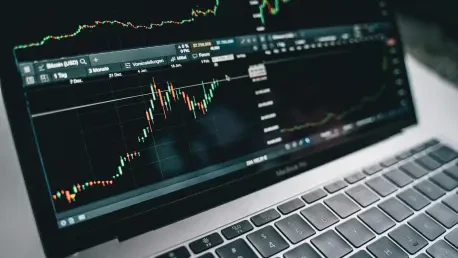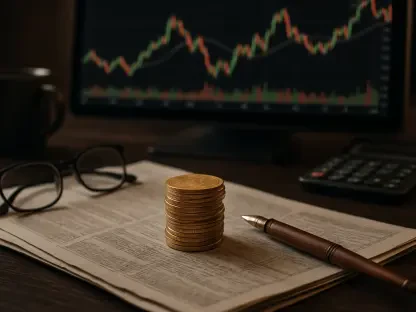In the complex landscape of political and economic discourse, few figures have intertwined their public narrative with the financial markets quite like former President Donald Trump. To explore this intricate relationship, we turn to Priya Jaiswal, a leading expert in Banking, Business, and Finance. Known for her deep understanding of market analysis and international business trends, Priya sheds light on Trump’s unique approach to the stock market as a personal scoreboard of success.
How has Donald Trump historically related his presidency to the performance of the stock market?
Throughout his political career, Trump has seen the stock market as a reflection of his success. He often touted the market highs during his tenure as evidence of his effective leadership. By doing so, he created a narrative that tied the economy’s performance directly to his presidency, emphasizing gains as his achievements.
Can you explain Trump’s approach to taking credit for stock market gains and attributing blame for losses?
Trump has strategically taken credit for market gains while attributing losses to the actions of others, particularly his political opponents. This method allows him to claim responsibility for positive outcomes while dismissing negative trends as the result of external factors or previous administrations, presenting him as a consistent catalyst for economic growth.
What did Trump say about the stock market’s decline during the early part of his return to the White House?
In the early stages of his recent term, Trump pointed to the stock market’s decline as being inherited from President Biden. He labeled it as the “Biden Overhang,” suggesting that any negative trends were remnants of the previous administration’s policies, distancing himself from the immediate downturns.
How did Trump address the impact of tariffs on the stock market in March?
In March, Trump acknowledged the market’s sensitivity to tariffs but urged investors to focus on the long-term rather than short-term fluctuations. He highlighted that countries like China have a longer investment horizon compared to the US’s quarterly cycle, directing attention away from immediate market reactions.
What is Trump’s perspective on the difference between American and Chinese approaches to financial markets?
Trump contrasts the American and Chinese financial perspectives by emphasizing the short-term focus in the US versus the long-view approach in China. He criticizes the American tendency to assess economic performance quarterly, advocating for a broader, more strategic outlook similar to China’s century-long perspective.
How has Trump described the stock market’s performance at the start of his second term compared to Biden’s presidency?
Trump has positioned the stock market’s recent performance as a delayed reaction to Biden’s policies rather than his own. By doing so, he sets the stage for claiming future improvements as a result of his leadership, while current declines are a hangover from Biden’s term.
What did Trump say about the “Trump effect” on the stock market before his inauguration?
Before taking office, Trump frequently mentioned the “Trump effect,” attributing rising stock prices and increased business confidence directly to his electoral victory. It was a vital part of his rhetoric, framing the surge as a response to anticipated economic reforms under his leadership.
How did Trump communicate the reasons for stock market gains during his initial term?
During his first term, Trump attributed market gains to his administration’s economic policies, such as tax cuts and deregulation. He emphasized that these measures increased investor confidence and stimulated growth, thus fueling the stock market’s upward trend.
Can you discuss the expectations and reality of the market’s reaction to Trump’s initial presidency?
Initially, the market reacted positively to Trump’s election, buoyed by expectations of pro-business policies. However, as the reality of his administration’s policy decisions, like tariffs, became apparent, the market recalibrated expectations, grappling with the complexity of his economic strategies.
How has Trump attempted to claim credit for stock market performance, even when he was not in office?
Even out of office, Trump claimed credit for market rallies by suggesting that investor optimism in his return influenced market trends. He linked his high polling numbers against Biden to a rise in market values, portraying his potential comeback as economically beneficial.
What argument did Trump use to attribute the strong stock market to himself at the start of 2024?
Trump argued that the market’s strength in 2024 resulted from investor confidence in his policies, asserting that his favorable poll numbers against Biden fueled the market’s optimism. This narrative implies that the mere prospect of his leadership instigated economic hope.
What example showcases Trump’s eagerness to link his actions to market outcomes during his presidency?
A notable example of Trump’s eagerness to connect his actions with market success occurred when he sent an autographed Dow Jones chart featuring a significant rally to Lou Dobbs. This gesture symbolized his personal association with market victories during pivotal moments.
How has Trump’s approach to showcasing his achievements evolved, particularly concerning the 10-year US Treasury yield?
Recently, Trump shifted focus to the 10-year US Treasury yield as a metric of success, aligning it with his goal to lower American borrowing costs. This evolution in strategy underscores a broader shift from stock market performance to long-term financial health indicators.
Why might Trump emphasize the 10-year US Treasury yield over the stock market in his current political strategy?
Emphasizing the 10-year Treasury yield serves a dual purpose for Trump: it addresses critics focusing only on stock indices and aligns with his broader economic vision of reducing borrowing costs, appealing to voters concerned about financial stability and interest rates.
What are Trump’s objectives regarding borrowing costs for Americans, and how do they relate to his presidential goals?
Trump aims to reduce borrowing costs to drive economic growth and make life more affordable for Americans. Lower interest rates support his broader presidential goals of stimulating consumer spending and investment, creating a tangible economic impact aligned with his campaign promises.
Do you have any advice for our readers?
In today’s volatile economic climate, it’s crucial to maintain a diversified portfolio and seek long-term growth rather than reacting to short-term political narratives or market fluctuations. Understanding the broader economic context can lead to more informed and resilient investment strategies.









